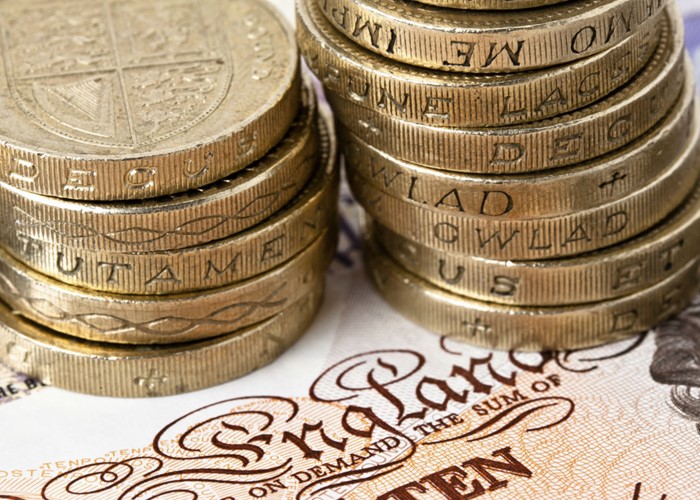Why now is a good time for a bond

You can get a decent rate on your savings by locking them up for a year.
If you are looking around for a good place to put your savings, you will know that there are thousands of different options, all with universally poor interest rates. Gone are the heady days of the 7% interest rate, and rates hovering around the 3% mark seem here to stay.
Even if you are likely to get a pretty poor return, it is still worthwhile understanding all the options open to you and scouting around for a respectable deal.
What kind of account is for you?
In the past, when the rates of a fixed rate savings account or bond were significantly higher than their instant access counterparts, it was definitely worth locking your money away and reaping the rewards. But can it still be worth it with today’s lower rates?
- Instant Access: A typical instant access account today will give you around a 3% return on your money, as we explained in The best place to put your savings. They offer greater flexibility, allowing you to withdraw and deposit money at will, with no penalties. If you are the kind of person who keeps an active eye on savings and is happy to go through the process of changing an account to get a better rate at the drop of a hat, then this could be the option for you.
- Fixed Rate: If you have less time to devote to financial dallying, and just want to put your savings somewhere safe, then you might be better off finding a fixed rate account that suits you. The longer you are willing to lock money away for, the better the rate. Today, in order to earn anything significantly over the 3% mark, you would have to commit to four or five-year terms. With Scottish Widow Bank's Five-Year Fixed Term Bond you can get a rate of 4.25%. If you go for a four-year fixed term, such as that offered by the Lloyds TSB eBond, you will earn 3.95%
There is uncertainty about what interest rates will do over the next year or so, but opinion seems to be leaning in favour of rates increasing, and you will be unable to take advantage of these increases if your money is locked away. However, the Monetary Policy Committee of the Bank of England has just confirmed that UK interest rates will remain at the record low of 0.5% for the time being, so these predicted increases are not coming anytime soon.
Compromise with a one-year bond
If you fancy dabbling with a fixed rate account, but don’t want to commit yourself for too long, you might want to think about investing in a one-year bond.
The bond involves locking your money away for a period of one year, during which time your interest earnings will be unaffected by the vagaries of fluctuating base rates of interest. Typical one-year bond rates are over the 3% mark, with the Tesco Bank Fixed Rate Saver offering 3.40% and the Post Office Online Bond Issue 4 offering 3.35%, which are both higher than the top instant access rates at the moment, even if not by much.
The pros
It’s not all plain sailing with the one-year bond, and it’s important to be informed about the good and bad points of any financial product.
- Rate of interest is not influenced by the Bank of England base rate. The rate stays fixed until the bond expires.
- The safety of your money is guaranteed up to £85,000 under the Financial Services Compensation Scheme.
- They are a simple financial product, just pay in and forget about it until the bond is about to expire. If you dislike chopping and changing, and all the paperwork that entails, then this could be for you.
The cons
- You have no access to your money for the term of the bond – which could pose a problem if you suddenly need emergency access to your cash.
- If interest rates rise significantly then the bond could become uncompetitive. For example, if you go for the Tesco Bank Fixed Rate Saver 1 year bond, paying a rate of 3.40%, and the official Bank of England base rate was to rise 1% - 2% over the next year, then you could find yourself missing out.
Financial Planning
Despite experts predicting that interest rates will rise, no one can say for sure if and when this will happen, or if any rise will be significant enough to get excited about. If you decide to go for a one-year bond, hedge your bets by using it as part of an overall savings plan. You might like to counteract any risk by putting a maximum of 50% of your savings in a fixed rate bond, and spreading the rest elsewhere. This gives you flexibility and allows you to relax whatever happens to the base rate!
To help you make up your mind, check out the table below of some of the best one-year bonds in the market today.
|
Bond |
AER |
Minimum investment |
|
3.55% |
£1,000 |
|
|
3.50% |
£1,000 |
|
|
3.40% |
£2,000 |
|
|
3.35% |
£500 |
|
|
Barnsley BS |
3.29% |
£1,000 |
More: Why a few white lies could cost you a fortune | Your landline is too expensive!
Comments
Be the first to comment
Do you want to comment on this article? You need to be signed in for this feature